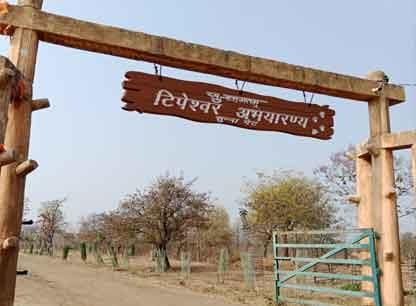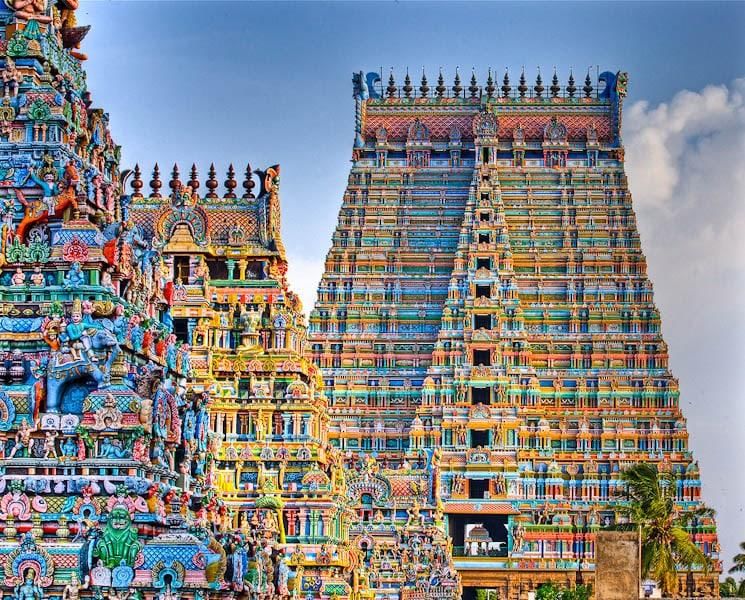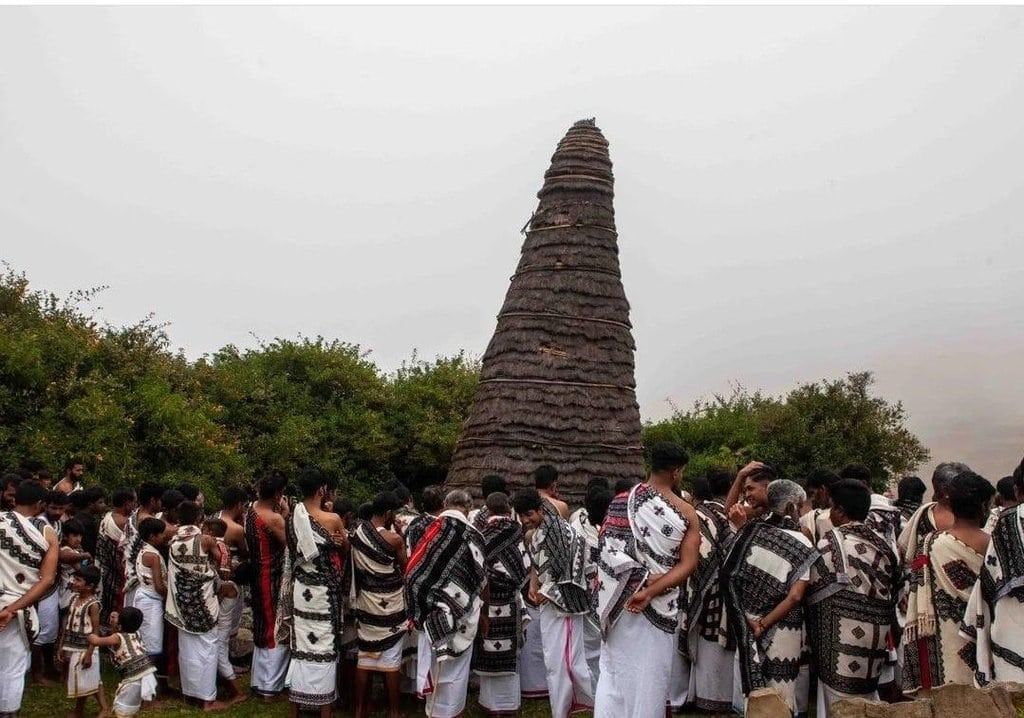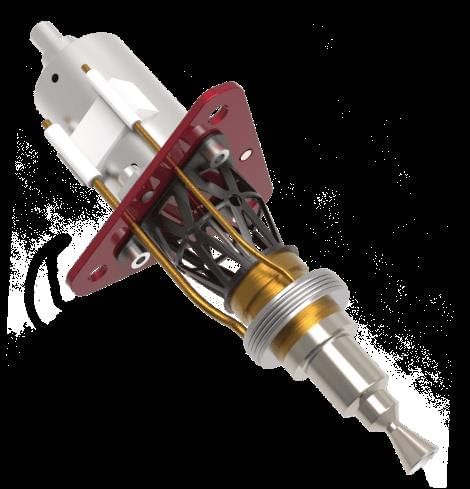UPSC Daily Current Affairs: 8th January 2025 | Current Affairs & Hindu Analysis: Daily, Weekly & Monthly PDF Download
GS1/Geography
China’s 7.1 Magnitude Earthquake: Significance and Implications
Source: CNN
Why in News?
On January 7, 2025, a powerful earthquake measuring 7.1 on the Richter scale struck the Tibetan region of China and parts of Nepal. The epicenter was located approximately 10 km beneath the surface in Tingry County, Shigatse region, around 80 km north of Mount Everest. The quake resulted in at least 95 fatalities, 130 injuries, and widespread destruction of homes, with tremors felt as far away as Kathmandu (Nepal), Thimphu (Bhutan), and Kolkata (India).
- The earthquake highlights the geological vulnerability of the region.
- It raises concerns about humanitarian impacts and infrastructure risks.
- Understanding tectonic dynamics is crucial for future disaster preparedness.
Additional Details
- Geographical and Cultural Context: Tingry County, situated in the Shigatse region of Tibet, is a high-altitude area averaging 4-5 km above sea level, home to approximately 800,000 residents. It is a significant spiritual hub due to its association with the Panchen Lama of Tibetan Buddhism and serves as a gateway to Mount Everest, impacting tourism.
- Critical Infrastructure: The earthquake affected the Lhasa terrane, crucial for geophysical studies, and the ambitious Yarlung Tsangpo River dam project, which is the world's largest hydroelectric initiative, designed to generate 300 billion kWh annually. Concerns also arise regarding water availability and flow in India’s Arunachal Pradesh and Assam regions.
- Environmental Sensitivity: The Himalayan region, often referred to as the "third pole," holds vast water reserves crucial for millions of people. Earthquakes can disrupt river courses and destabilize glaciers, leading to potential flooding.
- Tectonic Dynamics: The Himalayas were formed through the collision of the Indian and Eurasian plates approximately 50 million years ago. The ongoing northward push of the Indian plate at a rate of 60 mm/year causes continuous seismic activity, with 21 earthquakes of magnitude 6 or higher recorded since 1950.
- Humanitarian and Environmental Risks: The earthquake’s human toll underscores the necessity for improved disaster preparedness. Displacement of residents and potential hydrological changes are pressing issues following such events.
The 7.1 magnitude earthquake in the Tibetan region of China emphasizes the complex interplay between geological, environmental, and geopolitical factors in the Himalayan area. In addition to immediate relief efforts, there must be a long-term commitment to seismic research, sustainable development, and international collaboration to protect the region and its inhabitants.
GS2/Governance
Unnat Jyoti by Affordable LEDs for All (UJALA) Scheme
Source: PIB
Why in News?The UJALA scheme, launched by the Indian government in 2015, has successfully completed a decade, significantly contributing to energy efficiency across the nation. It has resulted in substantial electricity savings and a marked reduction in carbon emissions.
- Distribution of 36.87 crore LED bulbs under the UJALA scheme.
- Annual electricity savings amounting to ₹19,153 crore.
- World’s largest zero-subsidy LED lamp distribution initiative.
- Reduction in carbon dioxide emissions by 3.87 crore tonnes annually.
Additional Details
- Scheme Overview: The UJALA scheme, officially known as the LED-based Domestic Efficient Lighting Programme (DELP), aims to promote energy efficiency in households by replacing traditional bulbs and CFLs with LED bulbs.
- Eligible Households: All domestic households with a metered connection from their respective Electricity Distribution Company can participate in the scheme.
- Consumers can acquire LED bulbs through either an EMI payment option (monthly or bimonthly installments included in the electricity bill) or by making an upfront payment.
- To enhance inclusive growth, the scheme has integrated Self-Help Groups (SHGs) in the distribution process.
- Annual energy savings have reached 47,883 million kWh, alongside a peak demand reduction of 9,586 MW.
- Bulk purchasing strategies have effectively reduced the retail price of LED bulbs from INR 300-350 to INR 70-80, making them affordable for many households.
In conclusion, the UJALA scheme has not only facilitated substantial energy savings but has also played a vital role in reducing carbon emissions, showcasing a successful model for energy efficiency initiatives in India.
GS3/Environment
Tipeshwar Wildlife Sanctuary
Source: Times of India
 Why in News?
Why in News?A male tiger, originally from the Tipeshwar Wildlife Sanctuary in Yavatmal, has made an extraordinary journey of 500 kilometers to reach the Solapur district in Maharashtra. This unusual movement has drawn the attention of the forest department, prompting considerations for the tiger's relocation to the Sahyadri reserve.
- The Tipeshwar Wildlife Sanctuary is located in Yavatmal district, Maharashtra.
- The sanctuary is nourished by several rivers, contributing to its lush greenery.
- The region features diverse flora and fauna, including a variety of wildlife species.
Additional Details
- Geography: The sanctuary is characterized by a basalt landscape formed by ancient lava flows, making it a unique geographical area.
- Flora: The sanctuary boasts a rich assortment of plant life, including herbs, grasses, and bamboo forests that vary with altitude.
- Fauna: It is home to numerous animal species such as hyenas, chital, blackbuck, sambars, jackals, wild boars, peacocks, monkeys, blue bulls, wild cats, and bears.
- The sanctuary is often referred to as a "Green Oasis" due to its abundant water supply from rivers like Purna, Krishna, Bhima, and Tapti.
The Tipeshwar Wildlife Sanctuary plays a vital role in preserving biodiversity and offers a habitat for various species. The recent movements of the tiger highlight the importance of wildlife corridors and the need for effective conservation strategies.
GS3/Science and Technology
Nitrogen Use Efficiency
Source: Nature
Why in News?
Recent research has shown that lowering nitric oxide (NO) levels in plants can significantly enhance nitrogen uptake and Nitrogen Use Efficiency (NUE) in crops such as rice and Arabidopsis. This finding is pivotal as it addresses the pressing need for sustainable agricultural practices that improve crop yields while minimizing environmental impact.
- Nitrogen Use Efficiency (NUE) measures a plant's capability to utilize nitrogen for biomass production.
- Reducing NO levels can improve the function of high-affinity nitrate transporters (HATs), enhancing nitrogen uptake.
- Traditional farming methods can lead to higher operational costs and environmental issues.
- This innovative approach offers a pathway to improve agricultural practices sustainably.
Additional Details
- Nitrogen Use Efficiency (NUE): It is defined as the ratio of crop yield to the quantity of nitrogen absorbed from the soil or atmosphere, crucial for optimizing fertilizer usage.
- Environmental Concerns: Traditional nitrogen management can result in increased emissions of nitrogen oxides (NOx), contributing to global warming.
- Significance of Nitric Oxide (NO): NO is critical in regulating physiological processes in plants, particularly in activating HATs, which are essential for nitrogen uptake, especially under low nitrogen conditions.
This research highlights the potential for developing more effective and environmentally friendly agricultural strategies, addressing global food security challenges while reducing reliance on chemical fertilizers.
GS4/Ethics
Panch Pran: Five Pillars of National Transformation
Source: The Statesman
Why in News?
Recently, during an address to NCC cadets in Delhi, Vice-President Jagdeep Dhankhar highlighted a visionary roadmap for India's development anchored in five guiding principles known as Panch Pran.
- The Panch Pran represent the core principles aimed at guiding India's progress towards becoming a globally admired nation.
- This framework emphasizes personal responsibility, traditional values, environmental sustainability, cultural pride, unity, and self-reliance.
Additional Details
- Social Harmony: This principle aims to strengthen national unity by converting India's diverse cultures and traditions into sources of collective strength.
- Family Enlightenment: Highlights the importance of families in instilling patriotic and moral values, which serve as the foundation for a cohesive and enlightened society.
- Environmental Consciousness: Advocates for sustainable development through the conservation and protection of natural resources.
- Swadeshi: Encourages self-reliance and promotes the prioritization of indigenous products as part of the Atmanirbhar Bharat initiative.
- Civic Duties: Motivates citizens to actively engage in the nation's progress by fulfilling their civic responsibilities.
The Panch Pran framework is designed to cultivate a stronger and more resilient nation, rooted in collective efforts towards progress.
About National Cadet Corps (NCC)

The NCC serves as the youth wing of the Indian Armed Forces, headquartered in New Delhi. It is accessible to school and college students on a voluntary basis and functions as a Tri-Services Organisation, comprising the Army, Navy, and Air Force.
Key Features of the NCC
- Cadets receive basic military training in small arms and drill.
- Completion of the course entails no liability for active military service for both officers and cadets.
- The NCC was established in 1948, tracing its roots back to the "University Corps," formed under the Indian Defence Act of 1917 to address personnel shortages in the Army.
- The organization is led by a Director General (DG), who holds a 3-star rank.
GS1/Geography
Kalpeni Island
Source: Mint
 Why in News?
Why in News?A group of divers exploring marine life near Kalpeni Island in the Lakshadweep archipelago recently discovered what appears to be the wreckage of a European warship from the 17th or 18th century. This finding highlights the historical significance of the area and sparks interest in its maritime history.
- Kalpeni Island is part of the Lakshadweep archipelago, situated in the Arabian Sea.
- The island covers an area of 2.79 square kilometers and is located 287 kilometers (155 nautical miles) from Kochi, Kerala.
- Kalpeni is known for its stunning coral reefs, clear waters, and beautiful beaches.
Additional Details
- Geographical Location: Kalpeni Island lies southeast of Kavaratti Island, positioned midway between Androth and Minicoy.
- The island features two small islets, Tilakkam and Pitti, along with the uninhabited island of Cheriyam to the north, forming a single atoll.
- Kalpeni is renowned for its expansive lagoon, which measures approximately 2.8 kilometers at its widest point and runs in a north-south direction.
- The surrounding coral reef system is rich in biodiversity, making it an excellent location for snorkeling and scuba diving.
- Kalpeni experiences a climate similar to that of Kerala, adding to its appeal.
- The island has a vibrant cultural heritage, primarily inhabited by the indigenous Maliku community.
This discovery of the wreckage not only enhances the island's historical narrative but also draws attention to its ecological and cultural significance, positioning Kalpeni Island as a unique destination for both adventure and education.
GS3/Environment
Rat-hole Mining: Several Workers Stuck in a Coal Mine in Assam
Source: Indian Express
 Why in News?
Why in News?Three miners have been confirmed dead, while six others remain trapped in a flooded coal "rat-hole" mine located in Assam's Dima Hasao district. The water level within the mine has reached a depth of 200 feet, prompting the Indian Navy to deploy a team of deep-sea divers to assist with the rescue operations. The incident occurred in Umrangso, where nine workers aged between 26 and 57 were trapped. Despite the extensive coal and quarrying activities in the Dima Hasao region, the Chief Minister of Assam has indicated that the mine appears to operate illegally.
- Tragic incident involving trapped miners in Assam.
- Indian Navy deployed for rescue operations due to flooding.
- Concerns raised about the legality of mining operations in the region.
Additional Details
- What is Rat-hole Mining? Rat-hole mining is a method used to extract coal from narrow, horizontal seams, predominantly practiced in Meghalaya. The term "rat hole" refers to the narrow pits dug into the ground, which are typically just large enough for one person to descend and extract coal.
- Process: Miners descend into the pits using ropes or bamboo ladders to reach the coal seams, where they manually extract coal with basic tools such as pickaxes, shovels, and baskets.
- Types of Rat-hole Mining:
- Side-Cutting Procedure: Involves digging narrow tunnels on hill slopes until the coal seam is located. Often, the coal seam in Meghalaya is less than 2 meters thick.
- Box-Cutting: A rectangular opening is created, ranging from 10 to 100 square meters, leading to a vertical pit that is 100 to 400 feet deep. After locating the coal seam, rat-hole-sized tunnels are dug horizontally for extraction.
- Hazards of Rat-Hole Mining:
- Safety Concerns: The mining process is fraught with dangers due to inadequate ventilation, lack of structural support, and absence of safety gear, leading to frequent accidents and fatalities.
- Environmental Impact: Rat-hole mining is responsible for land degradation and deforestation, along with contributing to water pollution.
- Challenges:
- Socioeconomic Challenges: Many local communities rely on this practice for their livelihoods, which complicates regulatory efforts.
- Regulatory Issues: Despite bans, many mines remain unregulated, continuing to draw criticism for their associated risks and environmental damage.
- NGT Ban: The National Green Tribunal (NGT) imposed a ban on rat-hole mining in 2014 and reaffirmed this ban in 2015, citing numerous fatalities related to flooding during the rainy season, especially in Meghalaya.
This incident underscores the urgent need for regulatory enforcement and safety measures in mining practices to prevent further tragedies and environmental degradation.
GS1/Indian Society
Sri Ranganathaswamy Temple
Source: The Hindu
 Why in News?
Why in News?The temple town of Srirangam has seen a heavy influx of devotees visiting the Sri Ranganathaswamy Temple. In light of this increased foot traffic, local residents are advocating for the installation of lights in the passages beneath the outer gopurams to enhance safety for pilgrims.
- Sri Ranganathaswamy Temple is a prominent Hindu temple located in Srirangam, Tamil Nadu.
- It is the largest functioning Hindu temple in India, covering an area of 156 acres.
- The temple is dedicated to Ranganatha, a reclining form of Lord Vishnu.
- It is considered the foremost of the eight self-manifested shrines of Lord Vishnu.
- The temple has a rich history dating back to the 2nd century BC, with inscriptions dating from the 10th century CE.
Additional Details
- Architecture: The temple complex is a remarkable example of Dravidian architecture, featuring:
- 7 enclosures with massive walls.
- 21 vividly sculpted gopuras (towers).
- 50 sub-shrines and 9 sacred pools.
- A golden Vimana (dome) over the sanctum sanctorum.
- Rajagopura: The temple boasts the tallest temple tower in India, standing at 236 feet.
- The royal temple tower covers a base area of 32,500 sq. ft. and reaches a height of 196 ft.
- The temple hall contains 1000 intricately carved pillars, showcasing exquisite sculptures from the Vijayanagara period (1336-1565).
The Sri Ranganathaswamy Temple is not only a place of worship but also a significant cultural and architectural landmark, reflecting the rich heritage of Tamil Nadu. The community's request for improved lighting underscores the importance of safety for the many devotees who visit this historic site.
GS1/Indian Society
Toda Tribe Celebrates Modhweth Festival
Source: The Hindu
 Why in News?
Why in News?The Toda tribe, an ancient ethnic group residing in the Nilgiris Hills of Tamil Nadu, recently celebrated their traditional 'Modhweth' festival, marking the onset of their New Year.
- The Toda tribe is one of the oldest ethnic groups in the Nilgiris Hills.
- They are known for their unique culture, language, and traditional practices.
- Their livelihood primarily revolves around buffalo herding and intricate embroidery.
Additional Details
- Clans: The Toda tribe is divided into five clans: Paiki, Pekkan, Kuttan, Kenna, and Todi.
- Language: They possess their own unique language, although it does not have a written script.
- Community Structure: The Toda society is organized into a closed community known as a 'mund', and follows a strict patrilineal descent system.
- Social Organization: Their community is divided into two endogamous groups called Tharthazoll and Theveioll, governed by a traditional system called 'Noim', led by a head-man known as Monegar.
- Occupation: The Toda tribe is primarily engaged in buffalo herding and is renowned for their red-and-black embroidery on white fabrics, which has earned them a Geographical Indication (GI) tag.
- The tribe celebrates an annual buffalo festival, taking place either on the last Sunday of December or the first Sunday of January.
The Toda tribe’s rich cultural heritage and traditional practices, exemplified by their festivals and craftsmanship, highlight their significance in the socio-cultural landscape of Tamil Nadu.
GS3/Economy
India’s Coffee Export Surpasses USD 1 Billion for First Time
Source: Business World
Why in News?
India's coffee exports in the 2024 calendar year reached a historic high, achieving a remarkable growth of 45% in dollar terms, totaling $1.684 billion compared to $1.160 billion in 2023.
- Significant increase in coffee exports, marking a milestone for the Indian coffee industry.
- India is the 8th largest coffee exporter globally, with over 70% of its production sent overseas.
Additional Details
- History of Coffee in India: Coffee was introduced to India in the 1600s by Baba Budan, who planted seven seeds in Chikmagalur, Karnataka.
- Production Distribution: Karnataka is the largest producer, contributing 70% of India's total coffee production, followed by Kerala and Tamil Nadu.
- Export Dynamics: Coffee thrives in tropical and semi-tropical climates with temperatures between 16°C and 28°C and annual rainfall of 150-250 cm. The coffee plant prefers well-drained slopes and laterite soils.
- Major Varieties: The principal varieties cultivated include Arabica, Robusta, and Liberica, with Arabica being favored for its mild aromatic flavor.
- Role of Coffee Board of India: Established in 1942 under the Ministry of Commerce and Industry, the Coffee Board is crucial for promoting the Indian coffee industry, focusing on export enhancement, market development, and quality improvement.
- Economic Factors: The increase in coffee prices due to adverse weather in key producing countries like Brazil and Vietnam has led to heightened global demand for Indian coffee.
- European buyers, including roasters and traders, made advance purchases in anticipation of the European Union Deforestation Regulation (EUDR), boosting export demand.
- A 37% increase in unit value per tonne has contributed significantly to export revenue, aided by higher global prices and improved quality of Indian coffee.
- Efforts to strengthen relationships with traditional markets (e.g., Italy, Germany) while exploring emerging markets (e.g., UAE) have diversified export destinations and boosted overall volumes.
This growth in India's coffee export not only showcases the country's agricultural potential but also highlights the strategic importance of diversifying markets and enhancing quality standards to compete in the global arena.
GS3/Economy
India's GDP Growth Slows to 6.4% in FY25
Source: Times of India
Why in News?
India's real Gross Domestic Product (GDP) is anticipated to grow at 6.4% in the financial year 2024-25 (FY25), representing the lowest growth rate in four years. This deceleration is attributed to weak performance in industrial output and investment, as reported by the National Statistics Office (NSO). The projection falls short of both the Reserve Bank of India's estimate of 6.6% and the government's range of 6.5% to 7% for the same period.
- Projected GDP growth for FY25 is 6.4%, a four-year low.
- Weak industrial and investment growth are primary contributors to this slowdown.
- Forecasts are below expectations set by the Reserve Bank of India and the government.
Additional Details
- Gross Domestic Product (GDP): This term refers to the total monetary or market value of all finished goods and services produced within a country during a specified time period. It serves as a key indicator of economic performance, calculated as: GDP = C + I + G + NX, where C is consumption, I is investment, G is government spending, and NX is net exports.
- Nominal vs Real GDP: Nominal GDP is calculated using current market prices, while Real GDP adjusts for inflation, providing a more accurate reflection of economic productivity. The formula is Real GDP = Nominal GDP - Inflation Rate.
- Fiscal Deficit: A fiscal deficit occurs when a government's income is less than its expenditures, indicating the need to borrow funds to cover the shortfall.
The GDP growth forecast for FY25 highlights significant structural challenges within India's economy. While government spending and rural demand may provide some support, a comprehensive strategy addressing consumption, investment, and trade is necessary for sustaining long-term economic growth.
GS3/Science and Technology
Rudra High-Performance Green Propulsion System
Source: The Hindu
 Why in News?
Why in News?The Bengaluru-based space startup, Bellatrix Aerospace, has achieved a significant milestone by successfully demonstrating its Rudra 1N System during the PSLV C-60 mission, utilizing the POEM-4 platform.
- The Rudra 1N System is an advanced green mono-propellant propulsion system.
- It represents a cutting-edge solution for space propulsion, focusing on efficiency, precision, and sustainability.
Additional Details
- Performance: The system demonstrated a 1.4-degree/sec disturbance on the yaw axis and achieved an 80-degree angular rotation during operational tests, showcasing its precise maneuvering capabilities.
- Eco-Friendliness: It employs a non-toxic, environmentally friendly propellant, significantly minimizing ecological impact during space missions.
- The system offers a cleaner alternative to traditional chemical propulsion technologies.
- Bellatrix Aerospace designed and manufactured the entire system in-house, highlighting its technological independence.
- It is scalable, making it suitable for various satellite sizes and mission profiles.
About the PSLV Orbital Experimental Module (POEM-4)
- Functionality: POEM-4 is developed by ISRO, repurposing the spent fourth stage of the Polar Satellite Launch Vehicle (PSLV) into a functional orbital laboratory.
- It enables cost-effective research in space by hosting various scientific and technological experiments in a microgravity environment.
- Utilizes the fourth stage of the PSLV rocket as a stable microgravity testbed, supporting studies on plant growth, bacterial behavior, and other space phenomena.
- Maximizes the utility of what would otherwise become space debris.
- POEM-4 was launched aboard the PSLV-C60 rocket during the SpaDeX (Space Docking Experiment) mission.
In summary, the Rudra 1N System not only enhances space propulsion technology but also emphasizes environmental sustainability, making it a noteworthy advancement in India’s space capabilities.
|
38 videos|5293 docs|1118 tests
|
FAQs on UPSC Daily Current Affairs: 8th January 2025 - Current Affairs & Hindu Analysis: Daily, Weekly & Monthly
| $1. What are the primary causes and consequences of the recent 7.1 magnitude earthquake in China? |  |
| $2. How does the Unnat Jyoti by Affordable LEDs for All (UJALA) scheme contribute to energy efficiency in India? |  |
| $3. What is the significance of the Tipeshwar Wildlife Sanctuary in terms of biodiversity conservation? |  |
| $4. What is Nitrogen Use Efficiency, and why is it important for sustainable agriculture? |  |
| $5. What are the key features of the National Cadet Corps (NCC) and its role in youth development? |  |





















